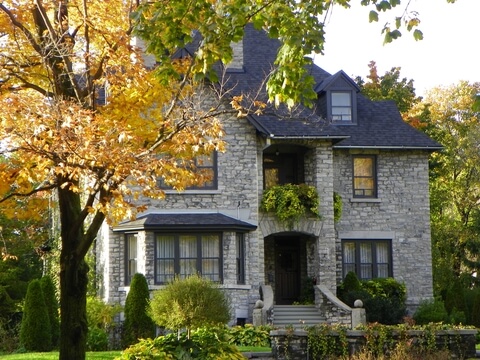
Buying an older home has a number of benefits. Location, price, character and lot size are just a few of the reasons why people may opt for an older home. However, character homes also have their drawbacks. Many homeowners who purchase older homes can get stuck with high repair costs, hidden issues and sometimes even higher insurance rates.
By better understanding how an insurance company views and values your home, you can know what to look for in a home and what issues may cause you some trouble with your insurance company down the road. Join Capital Insurance Brokers as we highlight a few important insurance considerations you should think about before purchasing an older home.
It’s All About Risk
It’s not uncommon for an older home to come along with slightly higher insurance rates. This is because, usually, the older the home, the higher the risk associated. Older homes weren’t built to today’s safety standards, so unless it’s been completely renovated, your insurance company will take issue. Old wiring, plumbing and heating pose greater risks of damage, which means there’s a higher chance you’ll be filing more claims.
Depending on the state of current aspects of your home, an insurance company may even refuse to offer you coverage until certain repairs or fixed have been made.
How To Lower Your Older Home’s Insurance Premium
Don’t worry – all is not lost! By making sure a few key repairs are taken care of first, you can keep your home insurance premiums down. When looking at older homes, pay close attention to your home inspector’s notes on the following areas:
- Roof. Roof’s have an average lifespan of about 25 years. If your roof is older than that, your chance of a leak increases, which may cause insurance companies to increase your premium.
- Electrical. Old electrical systems weren’t made for our power usage today. Old fuses and wiring paired with an increase in usage means your risk for a fire increases.
- Plumbing. Many old homes feature galvanized steel plumbing. These pipes only have a lifespan of 40-50 years, afterwhich they will rust and corrode. By sticking with your old, galvanized steel pipes, you’re increasing your risk for leaks, ruptures and flood damage.
- Heating. Radiant heat panels, space heaters or furnaces that are over 25 years old may not qualify as acceptable heat sources today. Choose an older home that has this updated, or be ready to get it done yourself.
By bringing these areas of your home up to today’s standard, your risk to home insurance companies decreases significantly, which will in turn decrease your price.
Talk To A Broker
If you’re considering purchasing an older home and are looking for insurance advice, contact the team at Capital Insurance Brokers. Call or get a quote today.

